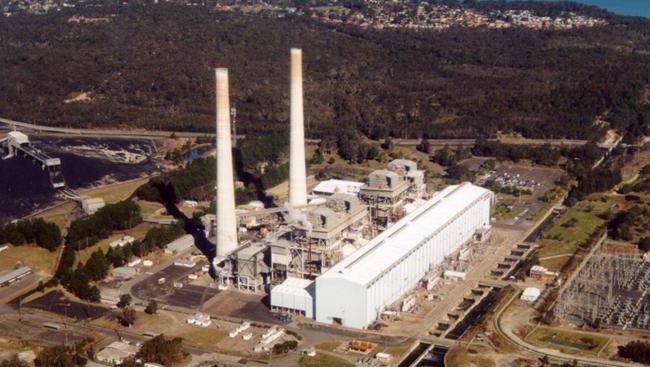The NSW Environment Protection Authority (EPA) will oversee a huge clean-up of land at the former Munmorah Power Station after it was officially declared significantly contaminated.
After years of investigations the EPA announced last Friday, May 3, that part of the site is affected with petroleum hydrocarbon and PFAS pollution, which stems from the operation of the coal-fired power station and past use of firefighting foams containing PFAS (Per- and Polyfluoroalkyl Substances).
The site on Scenic Dr, Colongra, has been fenced off and inaccessible to the public since 2016, limiting potential contamination exposure.
EPA’s Executive Director of Regulatory Operations Jason Gordon said the declaration was the first step in addressing environmental concerns on the ground.
“We know the community will be relieved the clean-up process can finally get underway,” he said.
“Making this declaration allows us to regulate the ongoing management of the site and ensure all remediation efforts are carried out safely and in a timely manner.
“Removing contaminants like PFAS and petroleum hydrocarbons from the land will better protect the environment and people’s health for current and future generations.
“This allows the site to eventually be redeveloped for another use, opening up opportunities for new jobs and investment in the local economy.”
Generator Property Management (GPM), a company owned by the NSW Government, is responsible for the active investigation and remediation of the contaminated areas.
“GPM owns the impacted land and is required to keep locals and stakeholders up to date with the progress of its management plan,” Gordon said.
To ensure transparency and compliance, an EPA accredited contaminated specialist, known as a site auditor, will oversee and review all works completed by GPM and its consultants.
In recent years, GPM has been investigating PFAS and hydrocarbon contamination under the environment protection licence for the former Munmorah Power Station, and as part of the EPA’s PFAS investigation program.
Pollution issues in other areas of the site, including the coal-ash repository, will continue to be regulated under the existing environment protection licence.
Fishing is already banned within the power station’s canals and water systems, but the EPA says it is “important to note that testing found seafood from the Tuggerah lakes system (Lake Munmorah, Budgewoi Lake, Tuggerah Lake) remains safe to eat”.
Coal-fired generators were permanently retired from service at Munmorah Power Station in July 2012 and the plant was demolished between 2016 and 2018.
It is now the site of the Waratah Super Battery – the biggest energy storage battery network in the southern hemisphere.
GPM has owned the power station since 2016 including an additional parcel of land within the site from Snowy-Hydro from April 11, 2023.
This additional land includes the former firefighting training area that is the source of a PFAS plume in the surrounding groundwater.
A spokesperson for GPM said on Friday that “GPM is not the originator of these contamination issues; they are a result of long-term power station operation by the Electricity Commission NSW (ECNSW), Pacific Power and Delta Electricity”.
“GPM has already engaged ecological specialists who have been involved in assessing PFAS
environmental impacts nationally,” the spokesperson said.
“They have undertaken detailed sampling and completed an environmental risk assessment that shows limited species impact close to the source and progressively less through the wider power station land.
“It is believed that the affected species do not present a likely possibility of upward migration of PFAS through the local fauna food chain.
“GPM has also initiated the construction of a water treatment plant to capture and further reduce the already low levels of PFAS being discharged in water running off where the power station once stood and is awaiting Central Coast Council’s development consent.
“Once obtained, GPM will immediately purchase and install this plant with any waste residues to be taken off-site to facilities licensed to receive them.
“GPM has engaged an environmental auditor and has already agreed to the necessary process of detailed evaluation of the source of the contamination and the extent of any plumes.
“Works already completed have shown that no plume extends outside the original power station footprint.
“GPM also has a remediation action plan that has been agreed upon with the auditor to remediate the hydrocarbon contamination fully.
“This plan is necessarily waiting until the full extent of any complications from PFAS (which overlaps the hydrocarbon) is understood.”
GPM is inviting groups or individuals to join a community consultation group which will meet at least quarterly, with the opportunity to inspect works, receive results of investigations and contribute to the development of appropriate plans to ensure the site is left in suitable and safe condition for the long term.
Details regarding the establishment of the Community Consultative Group and other information can be obtained from GPM’s website www.gpmco.com.au, by phoning 1800 817 711 or by emailing GPMCC@gpmco.com.au
Sue Murray



Be the first to comment on "Next steps for contaminated land at Munmorah power station"